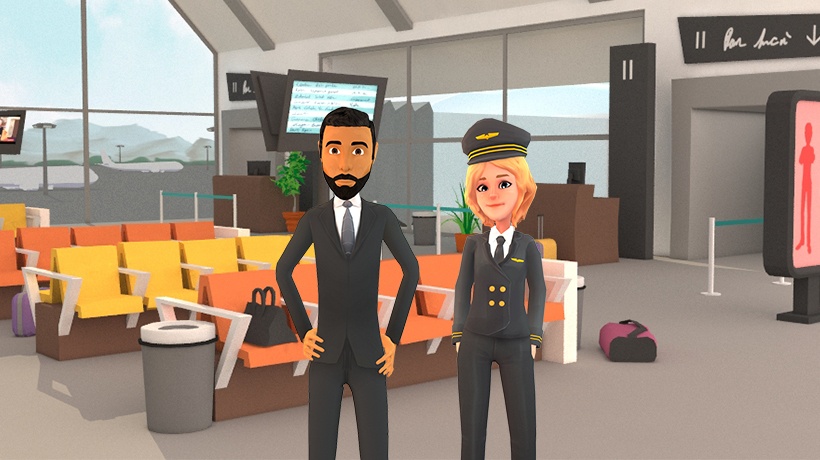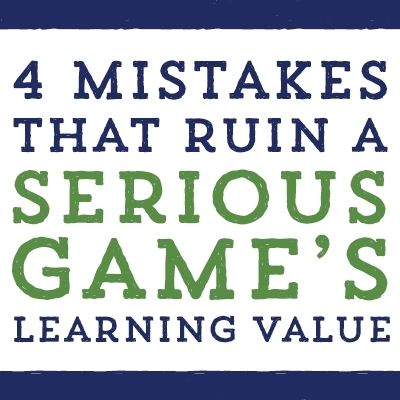How To Create Enterprise Games That Actually Add Value?
When it comes to serious game development, most of the time, people tend to think about the tools needed before the actual training itself. However, at the beginning of your creation process, you should be focused on basic, yet essential steps, before even thinking about the authoring tool you will need in order to setup your enterprise games.
You will find below our top 5 tips in order to achieve great enterprise games that actually add value:
1. Understand What Your Learners Want.
The very first step to create great enterprise games is actually to understand what it is that employees are looking for. This step, while crucial, is often under-estimated by instructional designers.
Simply put, you have to gather accurate and trustworthy information about what is happening in your learners’ everyday work life:
- Which challenges do they face?
- What skills would enable them to go to the next level?
- Why some employees do reach their goals, and why some do not?
Once you have a clear answer to the questions above, you are on your way to awesome enterprise games. But not before that. Even if it seems basic, yet this cannot be more true: how can you design efficient and relevant enterprise games without knowing and understand your audience?
2. Solve A Problem Faced By The Organization.
The second step is the logical follow-up to the first one. Once you understood your learners needs, all you have to do is solving them. Sounds easy, right?
Enterprise games you are trying to create should be problem-oriented, and should serve your learners in their work. If it is not the case, then what is the point of creating learning simulations? If it does not serve a clear purpose, you will not have any ROI. Creating enterprise games for work sake is pointless.
However, keeping in mind that your learning materials must solve a problem will help you during your serious game development. It will ensure that you setup a useful online training that fulfill your learners’ needs, thus making it a great simulation.
3. Setup A Clear Assessment Process.
Now that you have a clear vision on the goal of your serious game, it is important to think about how you will assess your attendees.
This is important for 3 reasons:
- Your learners will have a clear vision on their progress and their areas of improvement.
- It will give you an accurate visibility on their progress throughout their training completion.
- These numbers will enable you to demonstrate the ROI of your enterprise games to your boss, in a factual manner.
Are you wondering what the outcome will look like? Well, in a learner’s point of view, the radar could look like this:
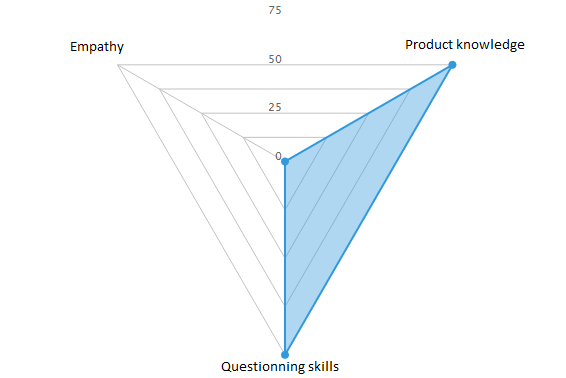
“Alright, but what about the back-end? Do I need to code or do something technical?”
Well, the answer is no. At least, not with ITyStudio. This serious game authoring tool is perfect for designing enterprise games. With its ready-made content, intuitive interface, as well as interactive content, serious game development has never been easier.
You will find below some screenshots of its evaluation management back office:
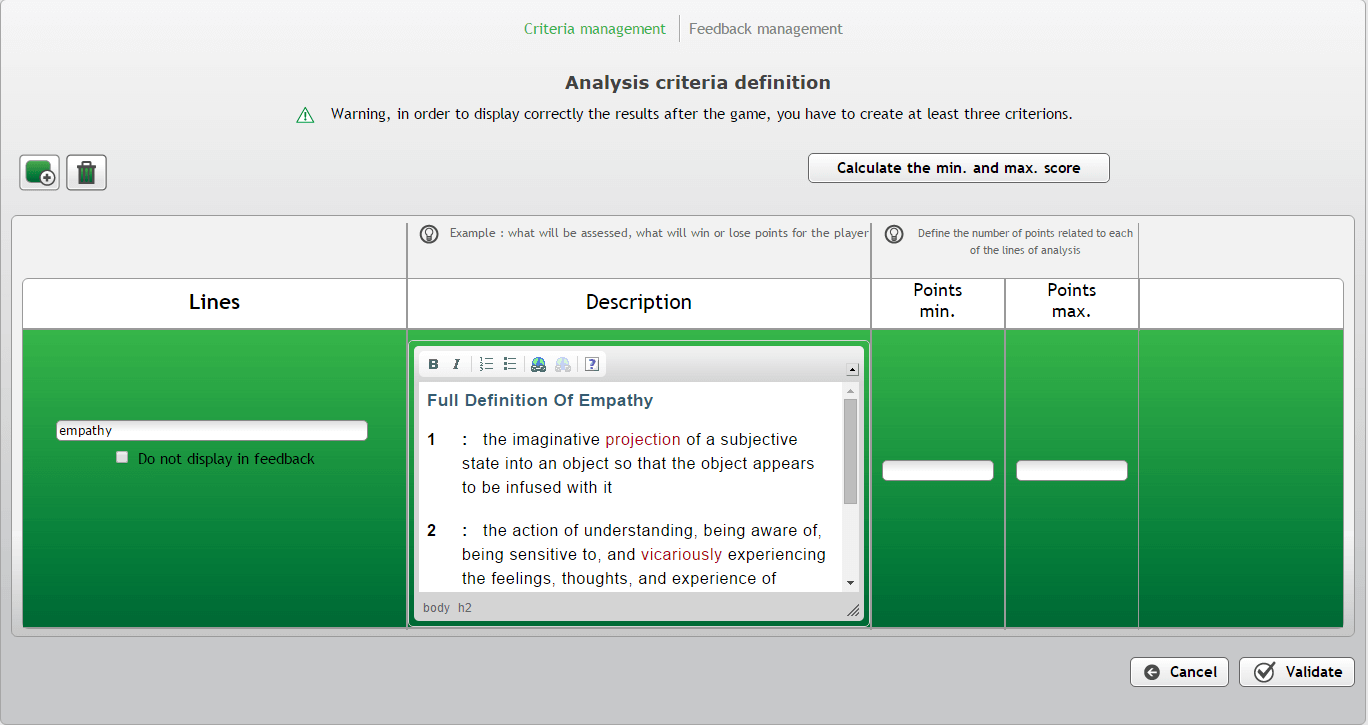
From our customers’ experience, we recommend to setup between 3 and 6 axes of analysis.
Under 3 axes, the information is usually too poor, whereas beyond 6, it becomes too complex.
The bottom-line is: try to setup between 3 and 6 axes, relevant to your training module, and your assessment part will be successful.
4. Make It Sound Realistic.
Another critical aspect of great enterprise games is to make it feel as realistic as possible. If you want to truly make your learners live an immersive experience, it is very important. To do so, do not hesitate to use well-rounded environments and characters. It will enhance the user experience of your serious game.
Do not worry, you do not need to have technical skills in 3D/2D design to make it happen. Actually, with new game-based learning platforms, such as ITyStudio, you can leverage its ready-made content to make your serious game development quickly and easily.


If it does interest you, feel free to have a look on its whole library, you might find what you need here!
5. Interactive Enterprise Games Have The Best Engagement Rates.
Last but not least: Interactivity. Yes, even after having completed the 4 previous tips, your enterprise games can still fail. Do you know the name of your worst enemy?
Right, here it is: Boredom.
And here is the point: your serious game can be as good as you want, as detailed as you want, as relevant as you want, if it bores your learners, it will not get you anywhere.
Too often, training managers forget that a good training simulation is a simulation that is actually practiced by the targeted learners. Consequently, do not hesitate to add interactivity during your serious game development.
To do so, you could elaborate an engaging scenario, in which learners could have impact on their environment. It is a little bit as if they were the hero of their own story.
Branching scenarios could enable you to make it happen.
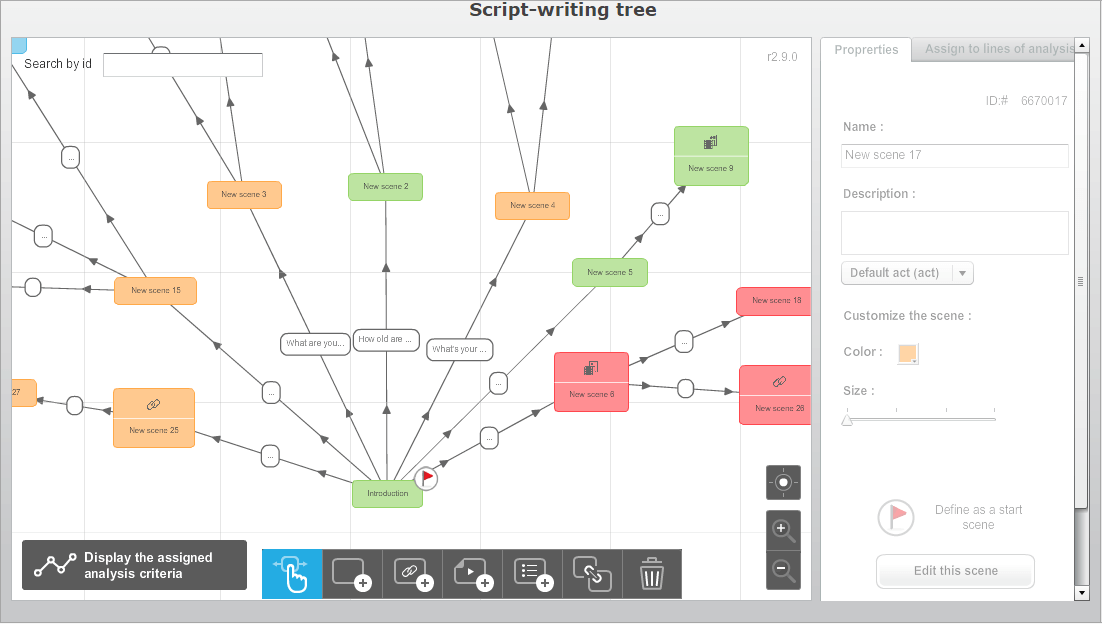
Ready To Create Your First Enterprise Games? Take Action!
In this article, we shared with you 5 tips on enterprise games that actually add value.
If you are interested in this kind of solutions, you should definitely give ITyStudio a try!
This serious games authoring tool contains all the features needed to embrace the tips listed above.
It is easy to use, it is engaging, and, best of all: You can try it for free!
Ready to go to the next level? Claim your 30-day free trial here.
